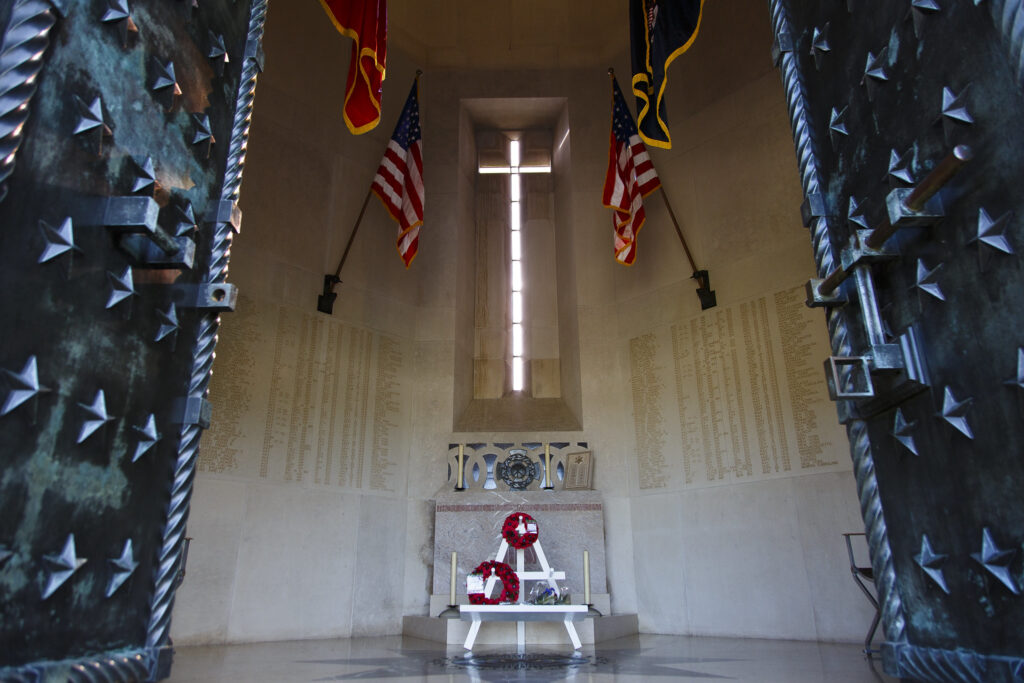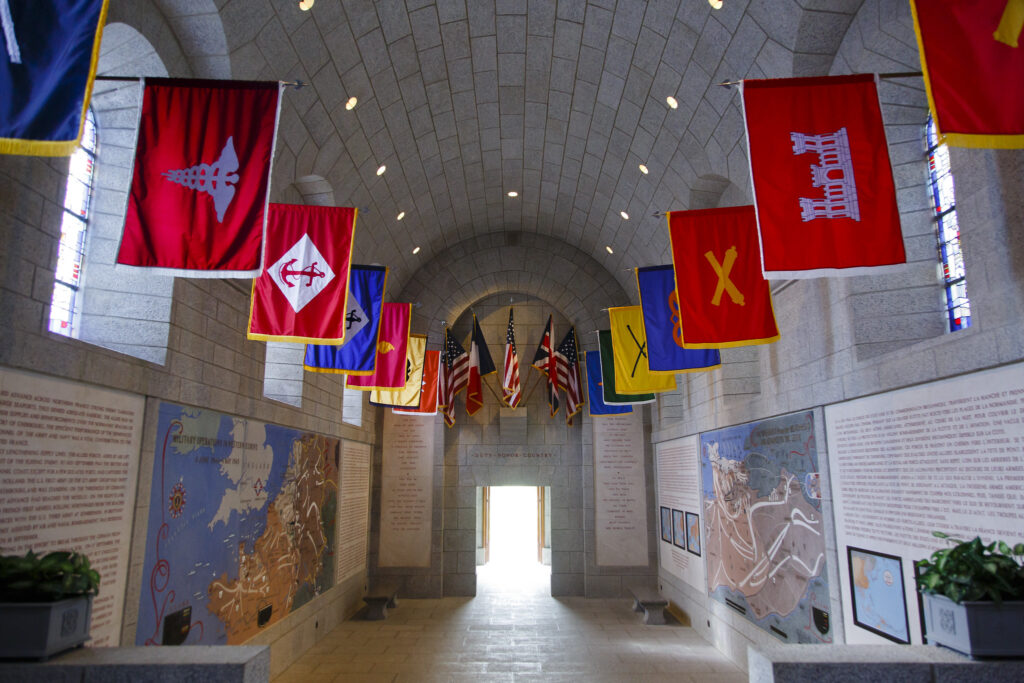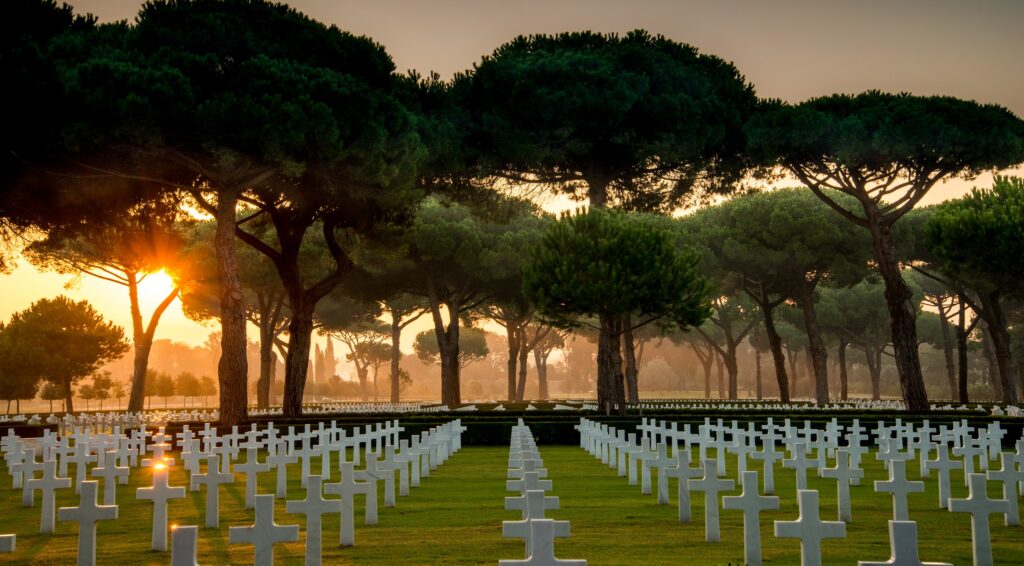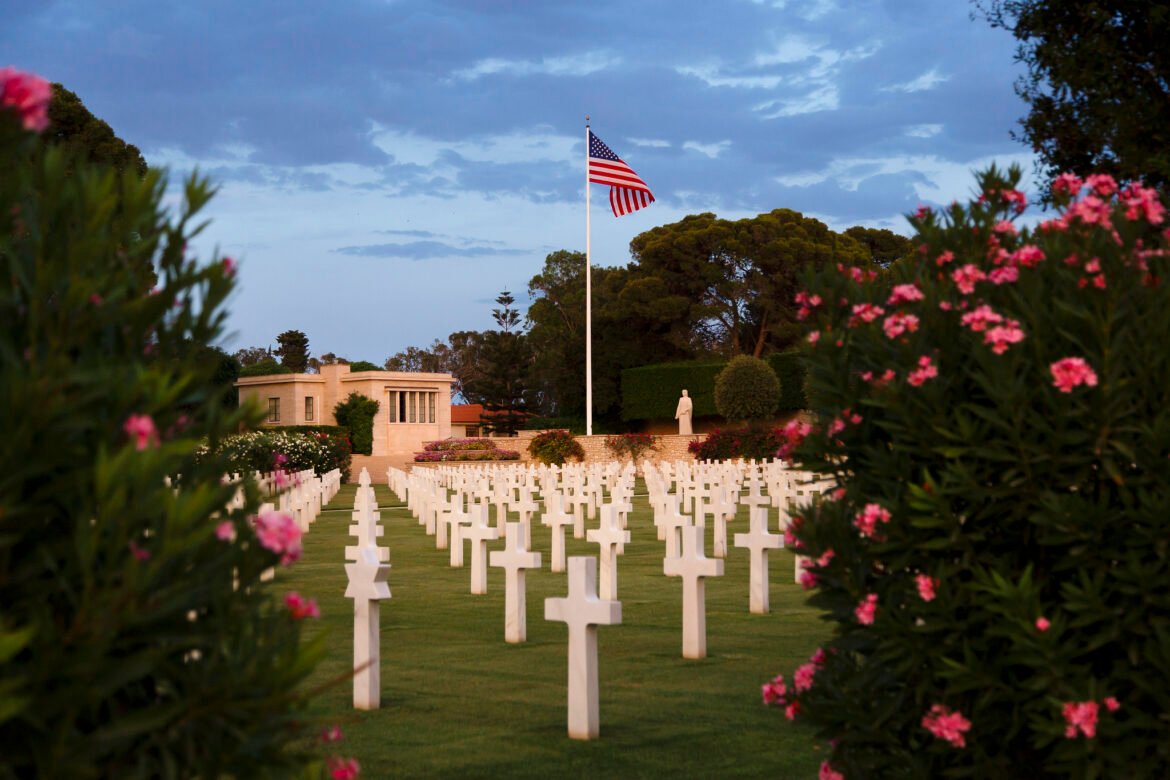America is a nation built on distinct individualism as well as common values. This sense of diversity in unity is something reflected in a very physical sense in the war cemeteries and monuments maintained by the American Battle Monuments Commission (ABMC), which in 2023 marked its 100th year anniversary.
The commission maintains 26 cemeteries and 32 battlefield memorials across 17 countries around the globe. No two sites are the same. In fact, they are non-standard by design. In an aesthetic contrast with the war cemeteries maintained by other nations, ABMC cemeteries are designed to appear unique in every aspect of their architecture, layout and memorial artwork, yet uniting the fallen with common headstone styles.

(Warrick Page/ABMC )
“I think what our nation does is a statement about our people and what it means to be an American,” Charles K. Djou, ABMC Secretary, told Military History Quarterly in an interview. “Every single site has something amazing and beautiful.”
Despite its tradition of individualism, the ABMC has several important factors common to every memorial site. “Where people are buried is not distinguished by race, rank, color or creed. This is something we take pride in,” said Djou. “Black and white soldiers are buried side by side. Generals are buried side by side with privates. There will always be a flagpole flying the American flag and that will be the highest point in all of our cemeteries.”
One Hundred Years of History
The ABMC originated in the wake of the First World War. It owes its name to the shared efforts of U.S. authorities to find fitting and respectful ways to preserve American war graves and battle monuments, which were then scattered across Europe and needed to be consolidated and maintained in a respectful manner.
“During the course of the war, temporary burials were marked in a number of different ways. If people had time, sometimes they would construct a wooden cross or sometimes stick a rifle in the ground with a helmet on it,” explained Michael Knapp, ABMC’s Chief of Historical Services. “People who made it back to rear areas and hospitals were buried in temporary gravesites that were more established and those generally had wooden crosses or some sort of grave marker.”
As these cemeteries were consolidated, graves were temporarily marked with white wooden crosses, with the exception of Jewish soldiers whose graves were instead marked with a white wooden Star of David by request of the Jewish community. Although many people argued for headstones similar to those in Arlington National Cemetery today to serve as the permanent grave markers, the ABMC’s first chairman, Gen. John J. Pershing, insisted that the white crosses be preserved.
“Pershing was adamant that we keep the look similar to the look of the temporary headstones with white crosses row on row – almost taken verbatim from the words of John McCrae’s poem ‘In Flanders Fields,’” said Knapp.

(Warrick Page/ABMC)
Therefore all war dead, apart from those of Jewish faith, are buried with crosses regardless of their religious beliefs. “The Latin Cross in the ABMC cemetery usage is considered symbolic rather than religious,” explained Knapp. “Although predominantly it’s a Christian symbol, it was not chosen specifically as such.”
In contrast to the war burial arrangements of other nations, the U.S. government allowed American families to choose whether their loved one was brought back to the United States for burial or whether he would be buried overseas. This was the case in both world wars, Knapp said, and all expenses were paid by the U.S. government regardless of the family’s choice.
Works of Art
What sets each war cemetery apart is the artwork and conceptual design unique to each space. The ABMC consulted prominent architects and artists to propose designs for each war cemetery.
“You see a lot of variation,” said Knapp. “It’s fascinating because no two are alike. There is no standard blueprint. Even the physical layout of all the cemeteries is different. Every aspect of ours is different. It’s very unique. I don’t believe any other country does it that way.”
The art is particularly evident in the non-sectarian chapel found in each cemetery. This offers family members and visitors a quiet place to reflect. The design, architecture, and art inside also reflect different themes and images to honor the dead.
“The art tends to be symbolic and allegorical,” said Knapp. For example, the Brittany American Cemetery in France is arranged to resemble the flaming sword within a shield which was the emblem of Supreme Headquarters Allied Expeditionary Force (SHAEF). The ceiling of the chapel in at the Sicily-Rome Cemetery reflects the constellations at the precise moment that Allied troops landed in Anzio.
The Need to Reflect and Respect
What stands out most of all to Djou, however, are the sheer number of war dead in each location. Standing amid the vast armies of white crosses is an overpowering experience. “It takes your breath away honestly,” he said.
Many of the cemeteries and war memorials, particularly in Europe, are within easy reach of major cities and popular tourist locations. However, Djou expressed the view that not enough Americans are coming to pay their respects to the fallen despite having opportunities to do so.

(Don Savage/ABMC)
“So many Americans will go to Paris and see the Eiffel Tower. They will go to Rome and see the Colosseum,” he said. “They don’t realize that the reason that you can visit those places is because of all of those thousands of young American service members who fought to free all these places.”
Djou encourages all Americans traveling abroad to stop at a war memorial or cemetery even briefly, to visit those lost in battle who never had the chance to go home. “So many of these sites are just a few minutes away and so many Americans don’t realize how close they are.”

